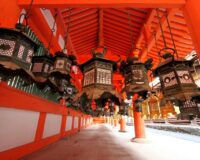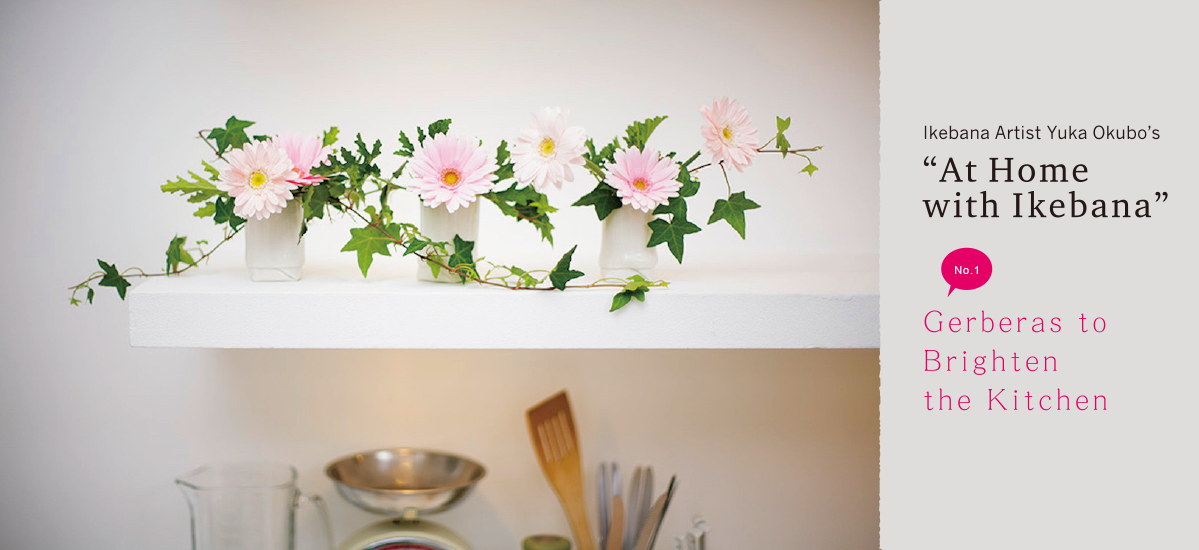
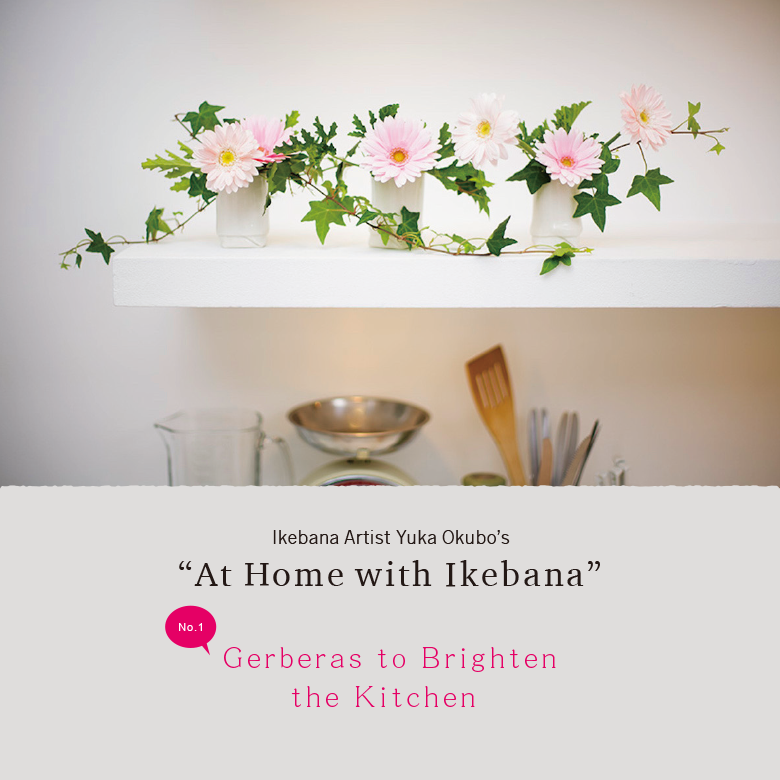
Try your hand at quick and easy ikebana using readily available flowers and items from around the home. Ikebana artist Yuka Okubo gives us an ikebana lesson and shares her thoughts on how to bring happiness and cheer into the home with flowers. Today we’re working with gerberas.
Text and Ikebana : 大久保有加 Yuka Okubo / Photos : 新美 勝 Masaru Niimi / English Version : Judy Evans
Keyword : Ikebana / Flower Arranging / Floral Art / Gerbera
Gerberas to Brighten the Kitchen
Gerberas, with their long straight stems and whorls of brightly coloured petals, are truly eye-catching. These natives of South Africa come in many varieties, sizes and colours, from single and multiple layers of petals to spider gerberas, with their layer upon layer of long, pointy petals. While spring is the best flowering time for these cheerful members of the daisy family, gerberas are available from florists all year round and can brighten up a space no matter what the season.
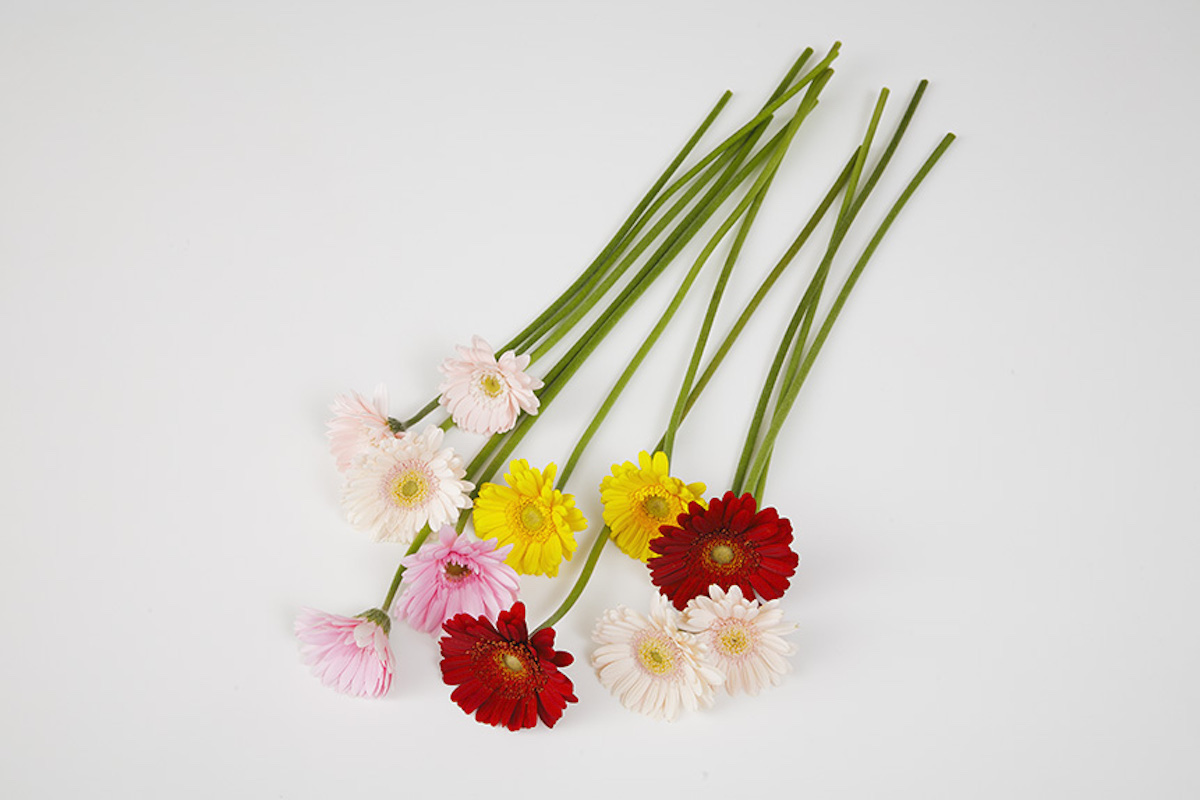
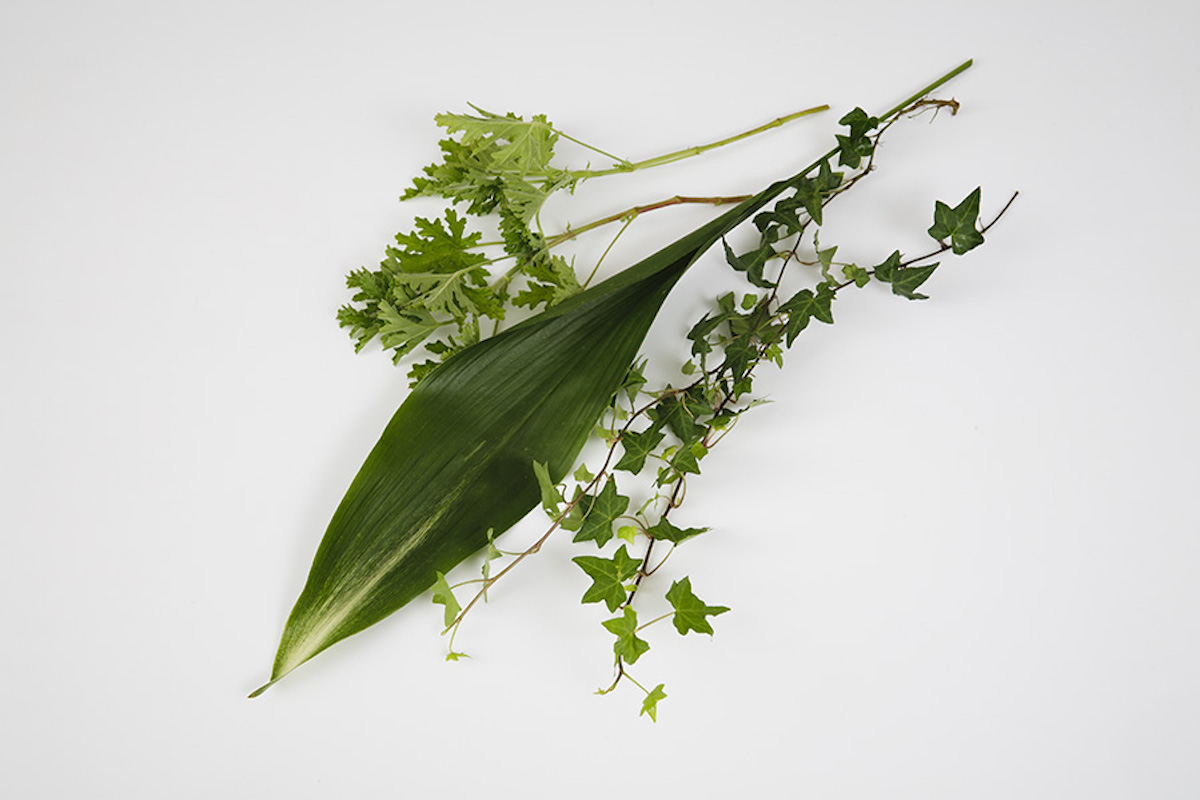
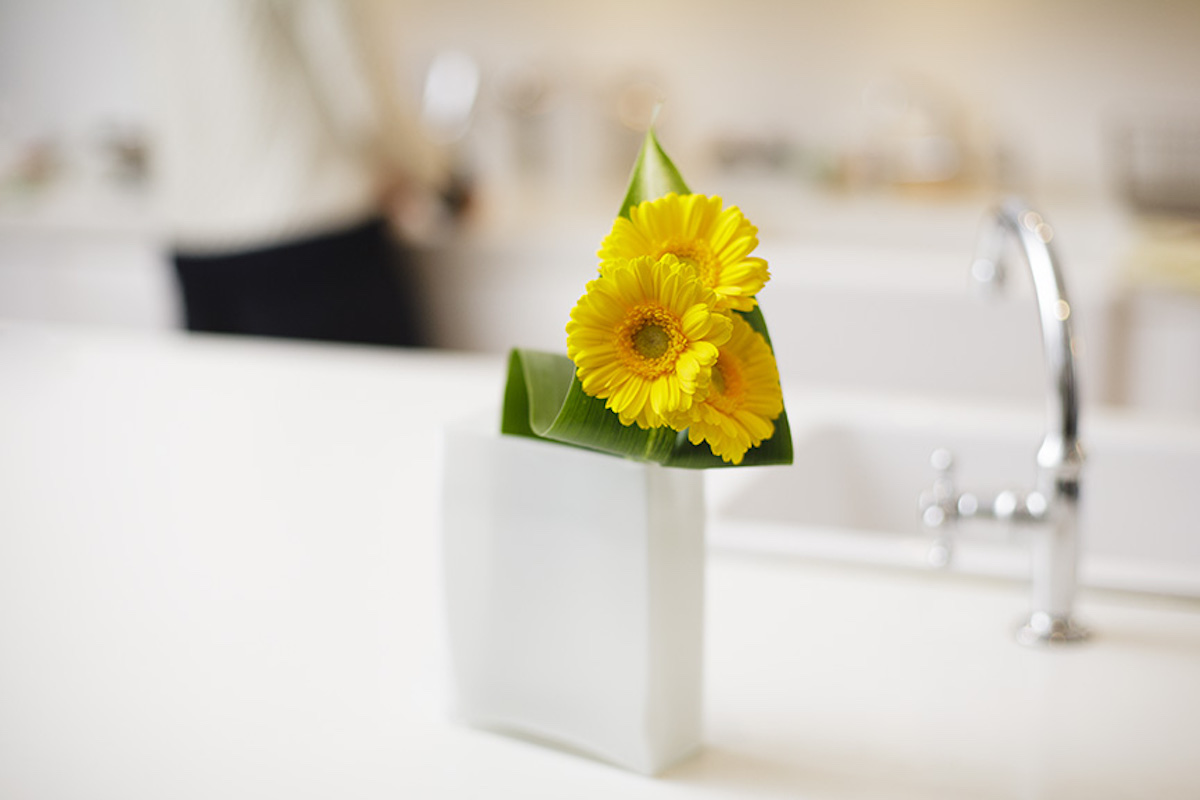
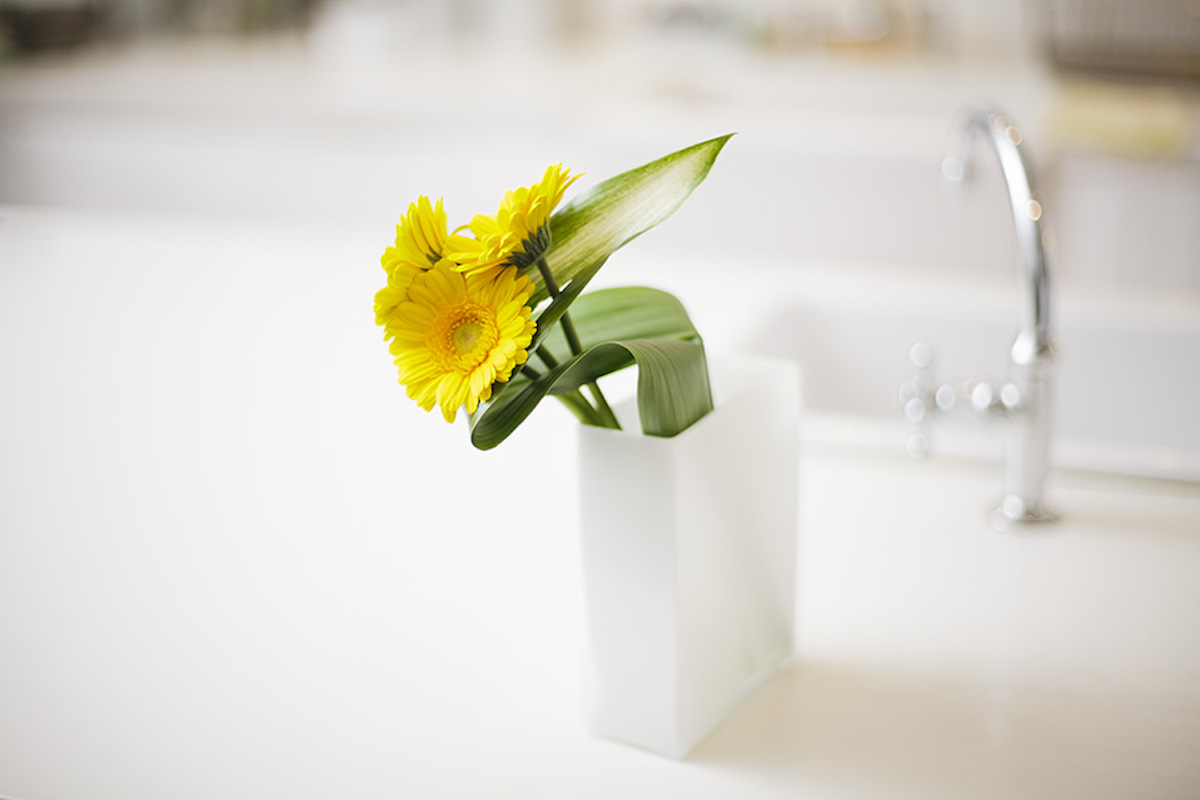
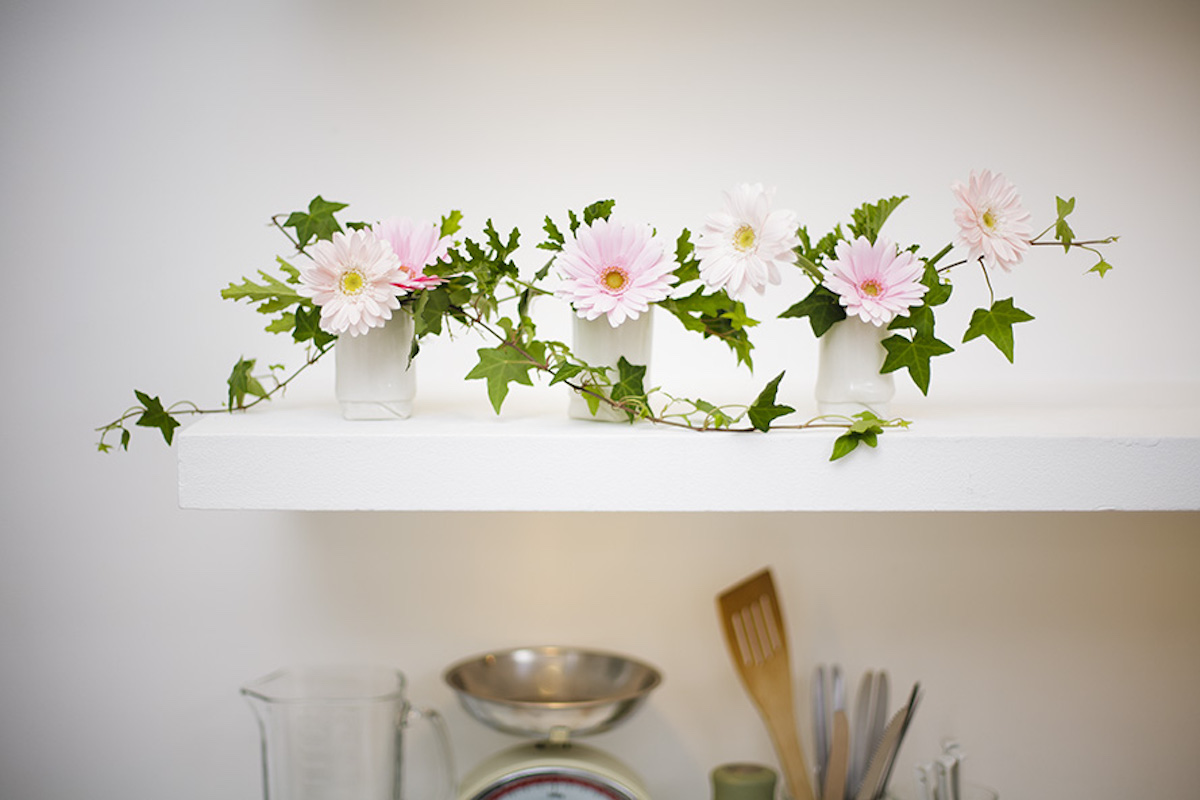
Ikebana – a Manly Art Form
Ikebana, one of the three classical arts of refinement, was originally practised by the menfolk among the nobles and the samurai as a form of mental training. Women did not begin learning ikebana until late in the Edo Period.
Flower arranging can be considered a kind of wordless communication with the plant world. In the past, the master of the household would show his hospitality by placing a flower arrangement in the tokonoma alcove of the reception room, for guests to enjoy. The design would have been carefully considered and the plant material studied to ascertain the sense that the flowers and plant material evoked. In order to accentuate the most pleasing aspects of the material and draw out the beauty that he wanted to express, the designer would remove any parts that detracted from the overall vision. This process supported the cultivation of intuition and decisiveness. Not only were these qualities vital to the warriors of bygone days, they remain important business skills today!
These days we tend to think of ikebana and flower arranging as a pastime for women, but let us not forget that this art was originally developed by men. Indeed, there is still a certain allure about a man who understands and appreciates the beauty of flowers!
One of the appeals of ikebana is the way that concentrating on the essence of plants and flowers offers the opportunity to clear one’s head of unwanted distractions. As the practitioner becomes absorbed in the process, working to the rhythm of his or her own breath, a kind of harmony is achieved.
Ikebana and the culture of flowers are deeply rooted in the Japanese way of life. While the term, ikebana, means “giving life to flowers”, this refers not only to flowers themselves, but to the radiance of all plant life. This sense of sharing our lives with flowers is something I hope will never be lost from the Japanese way of life.





